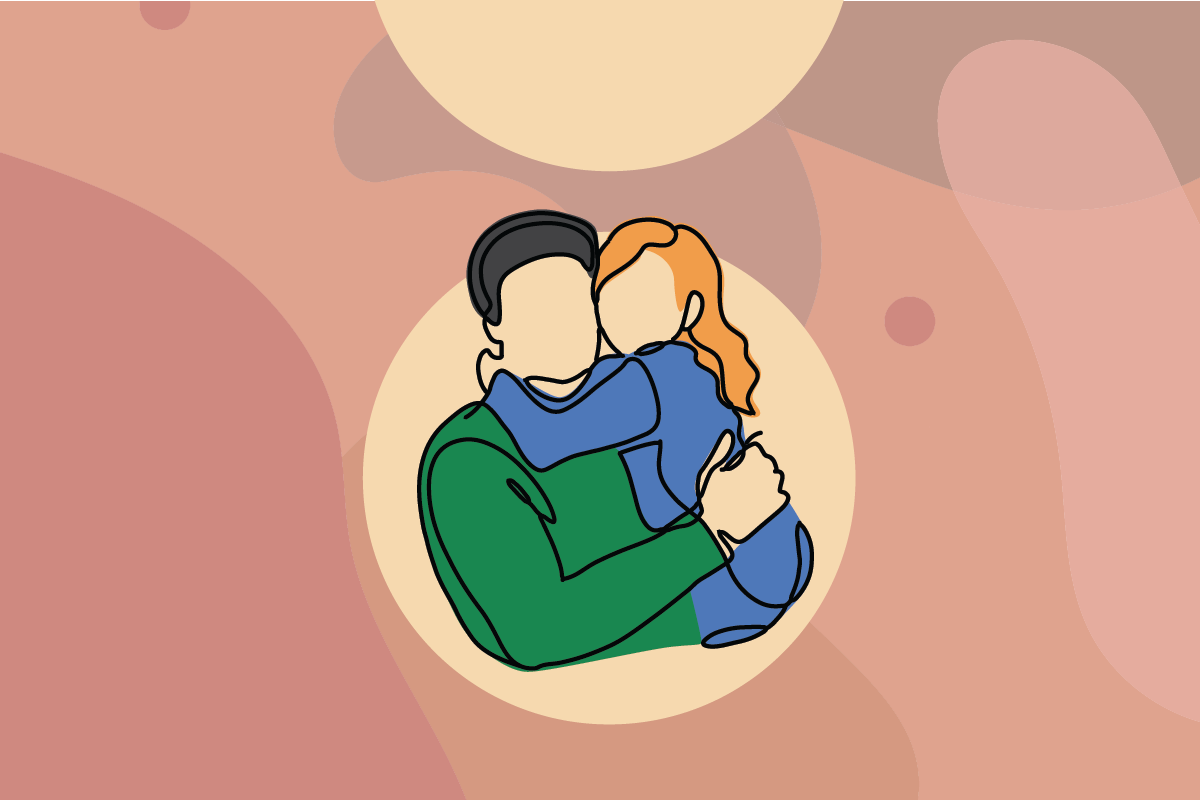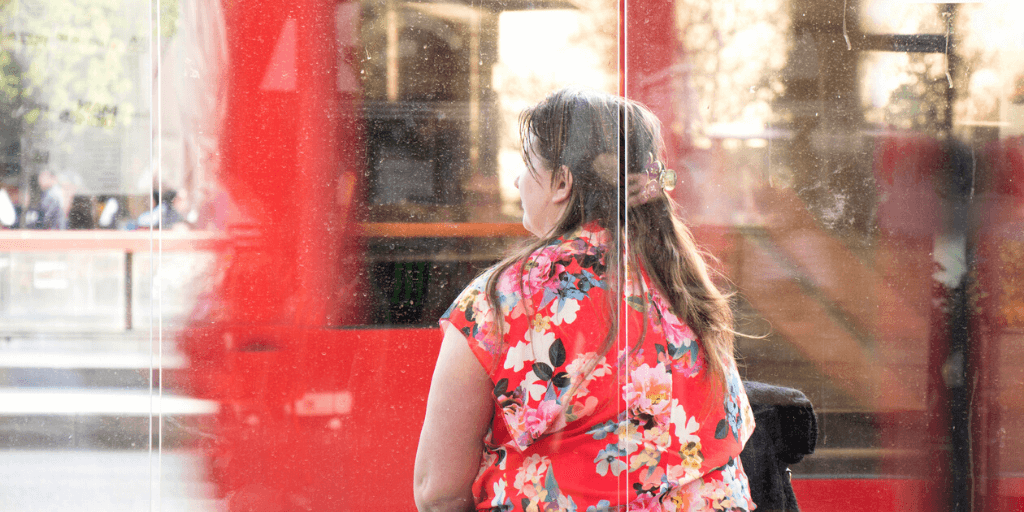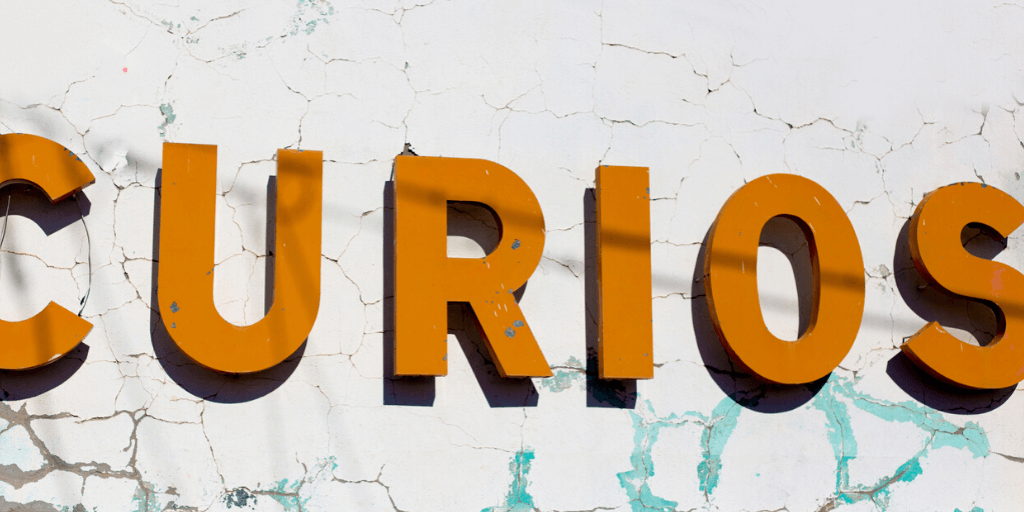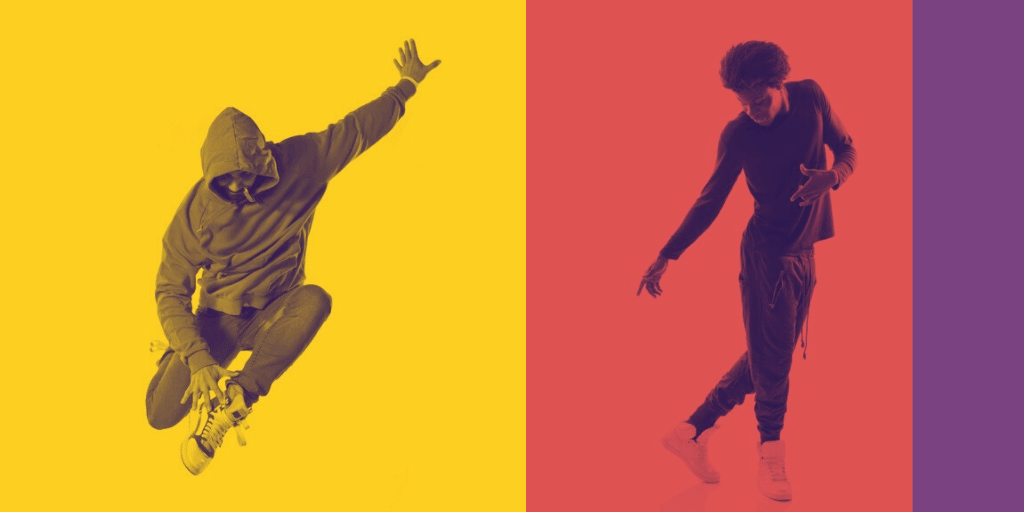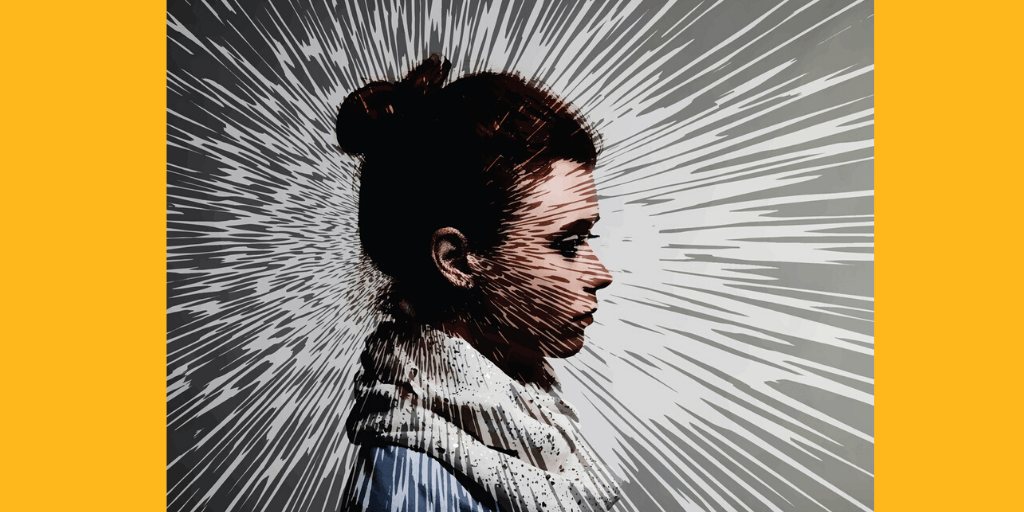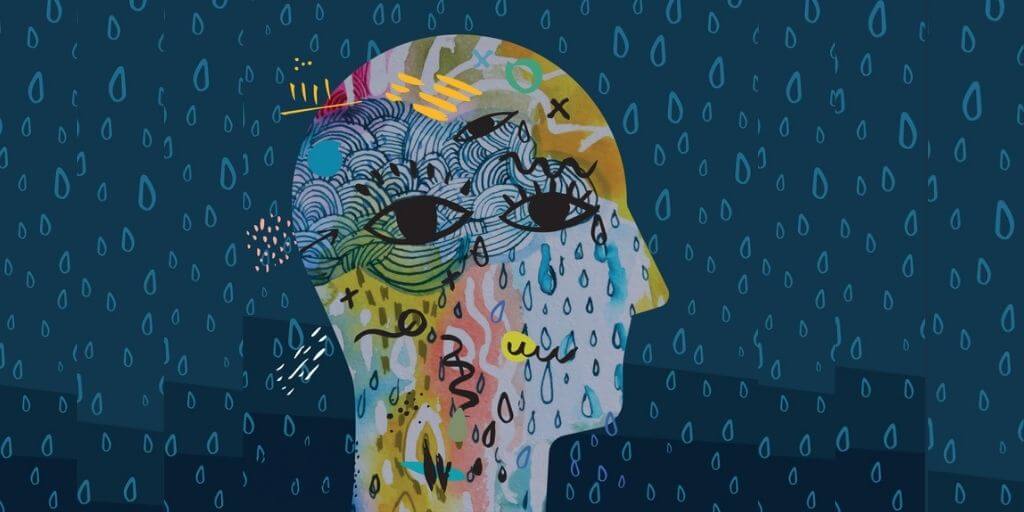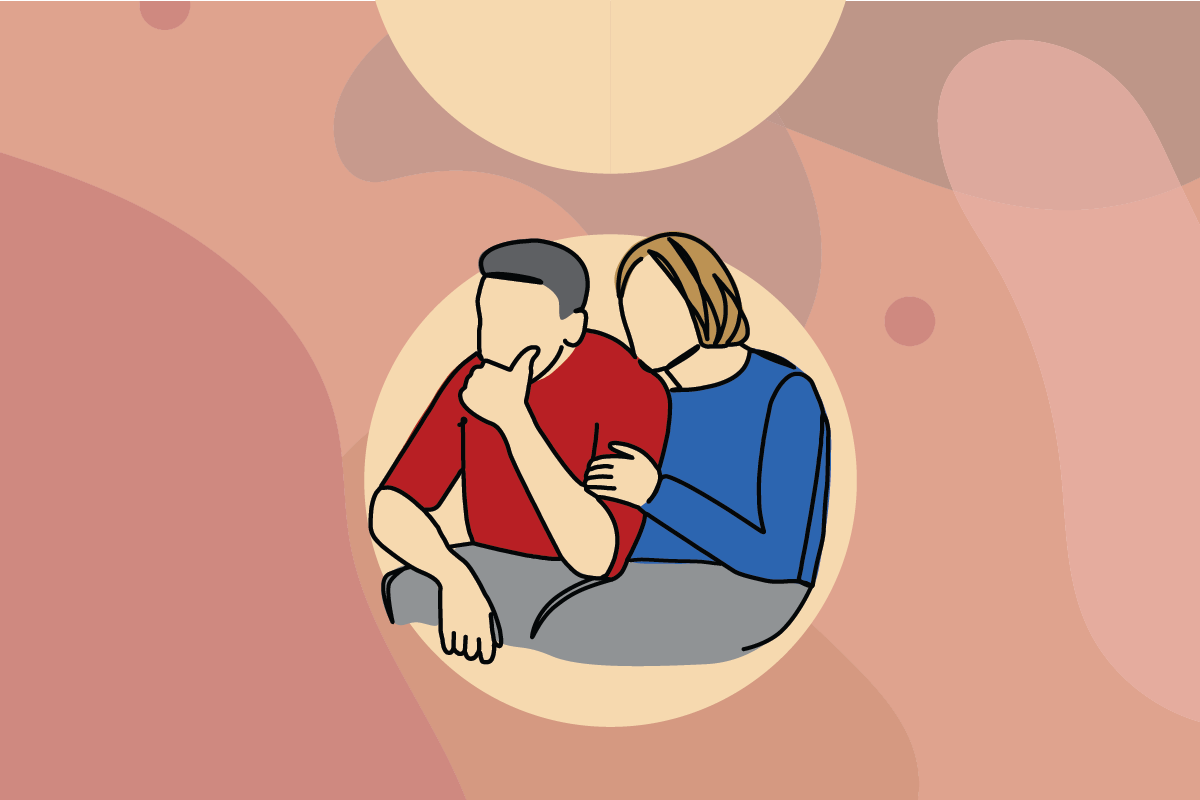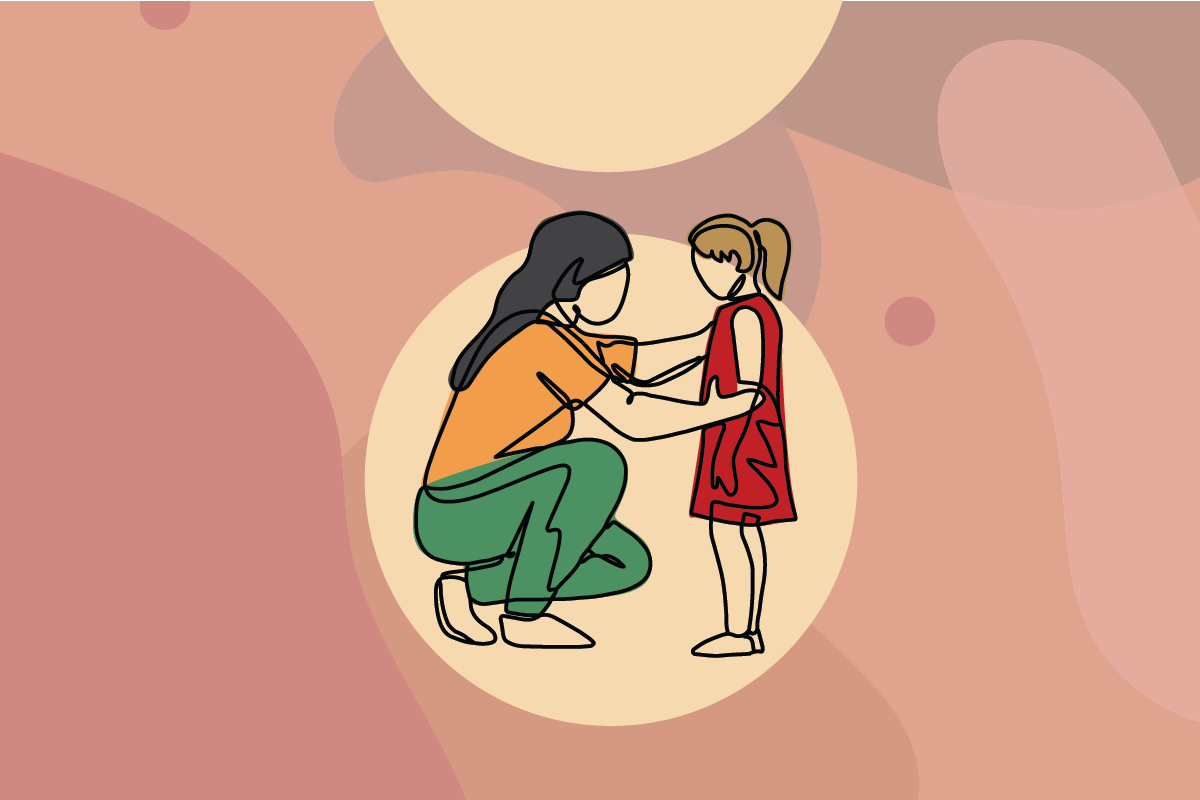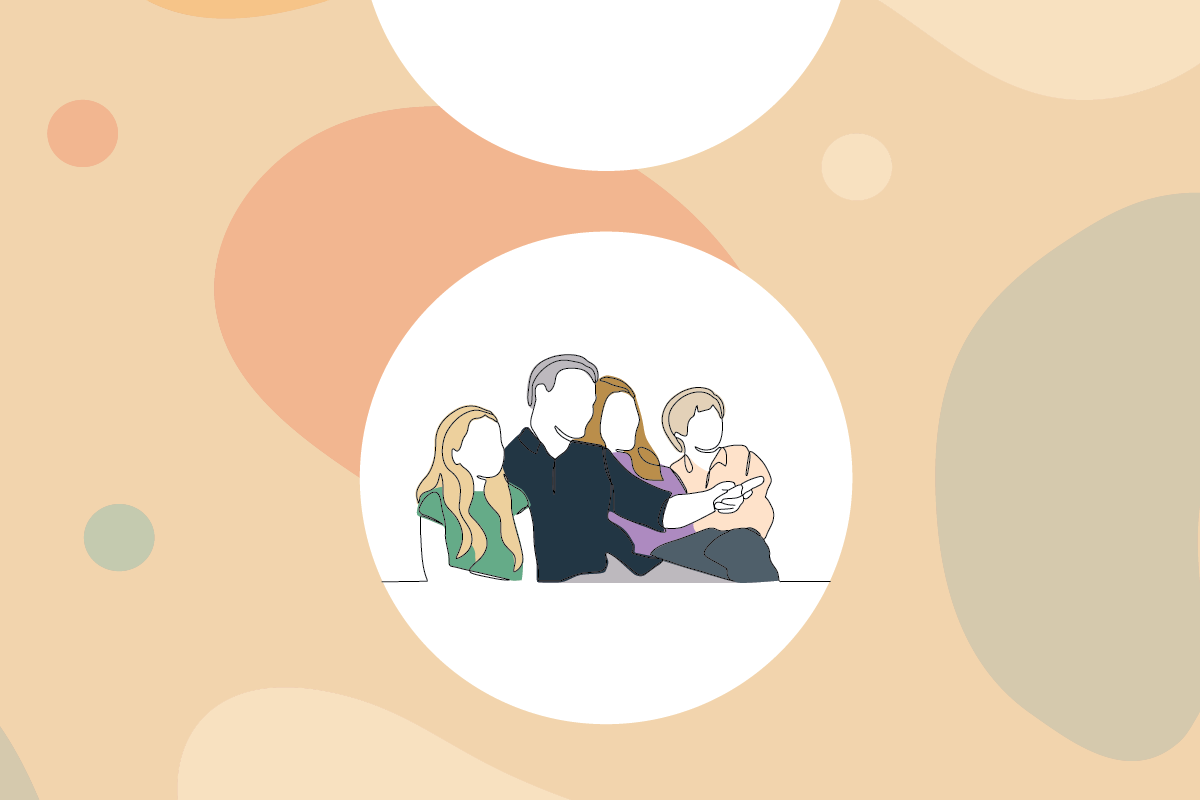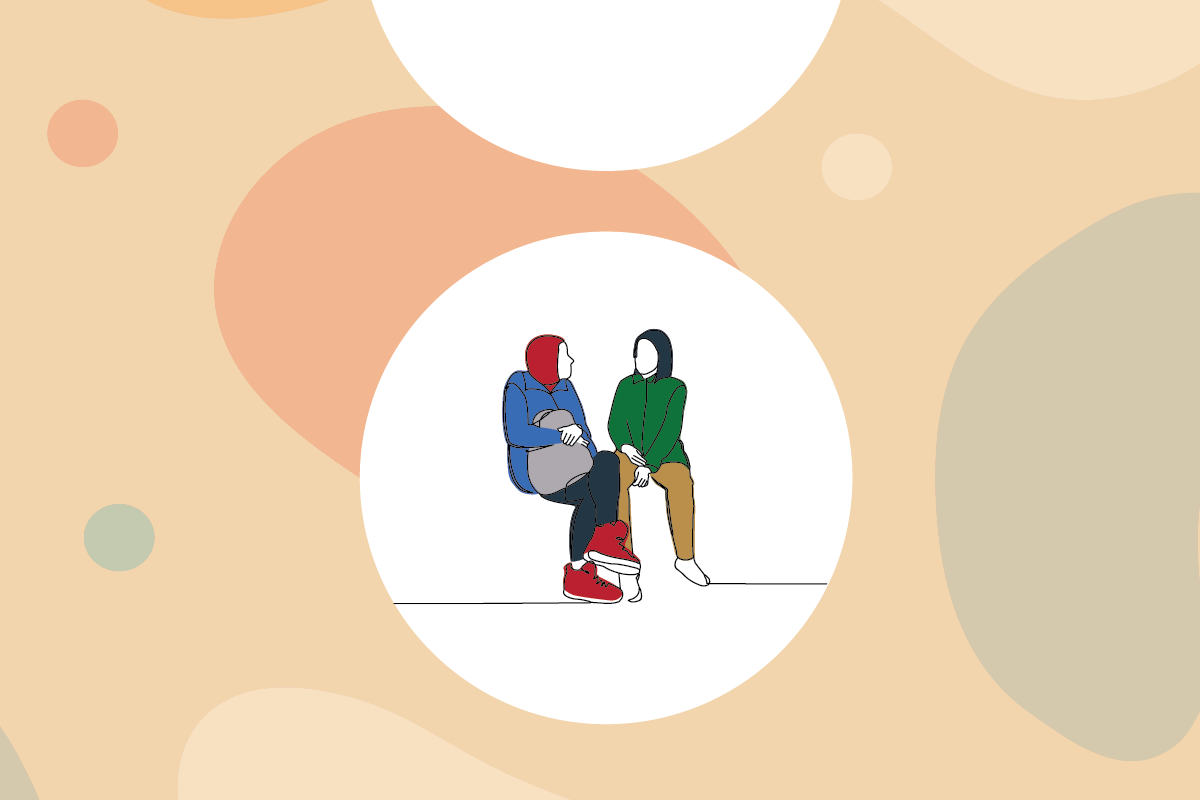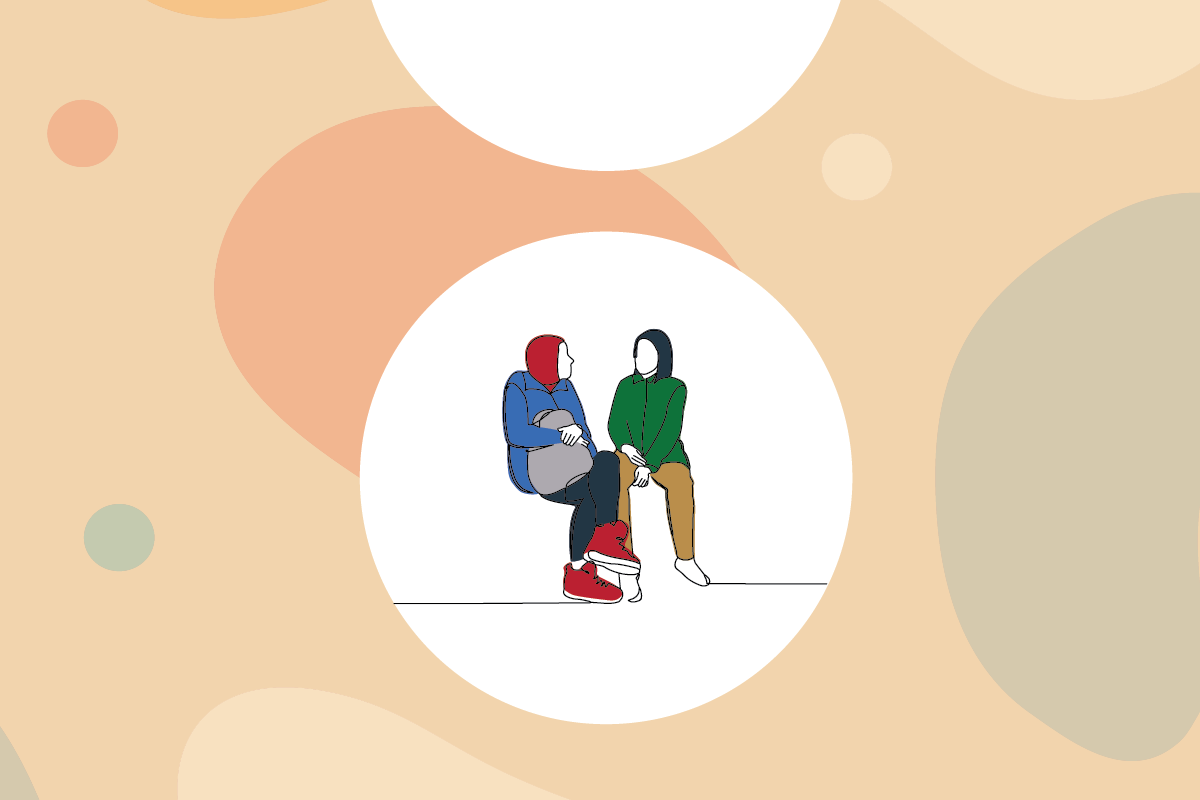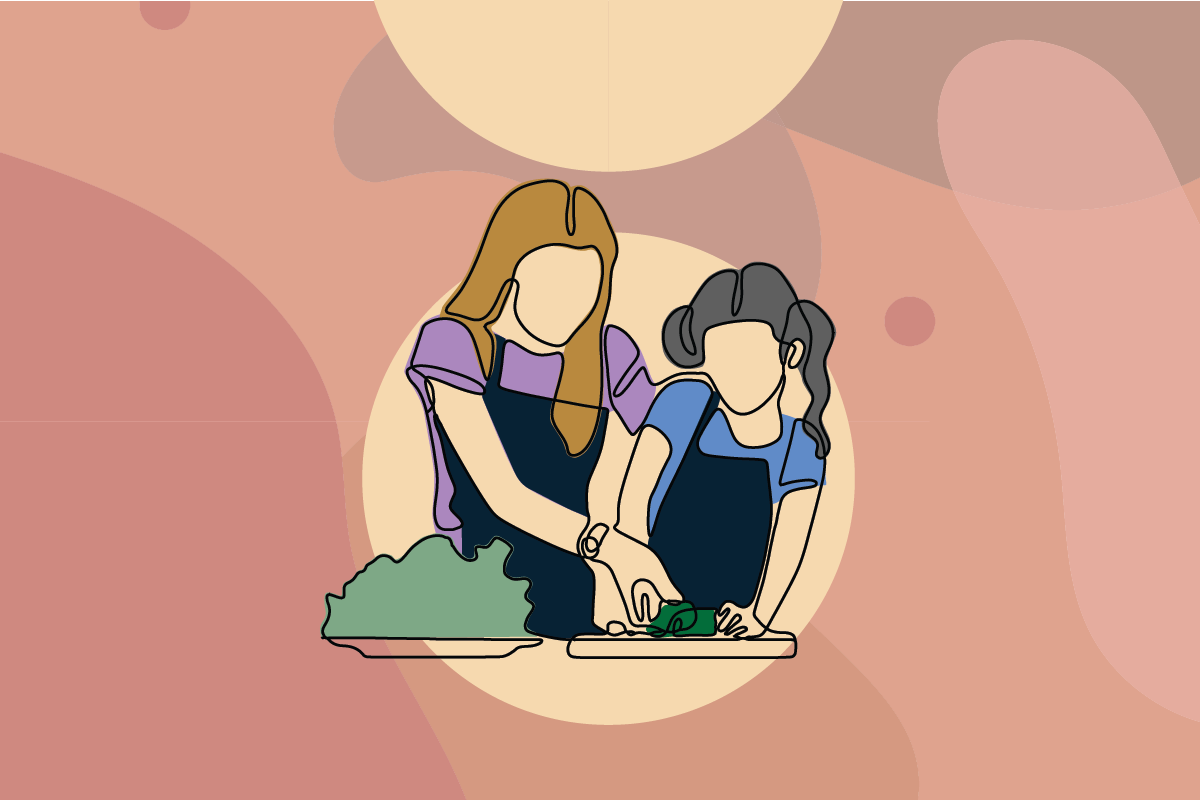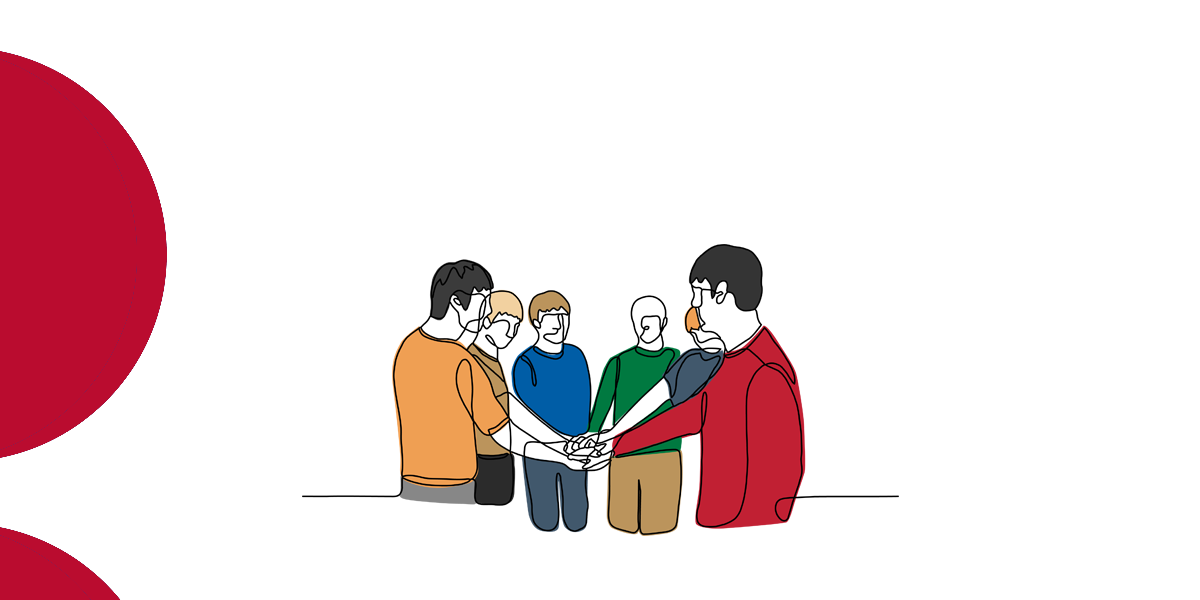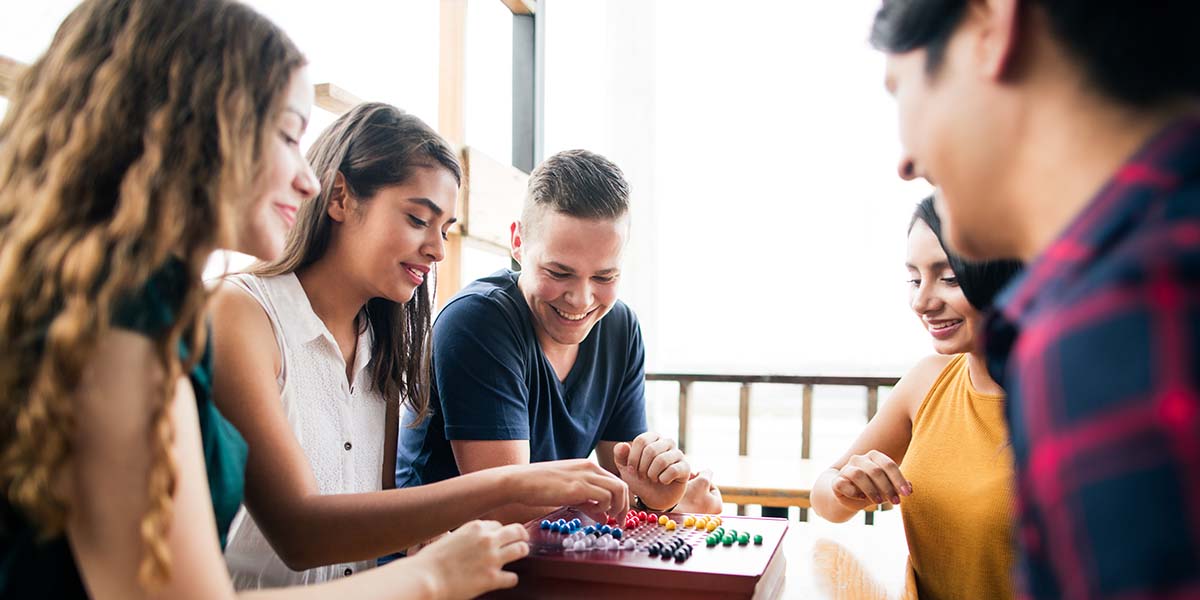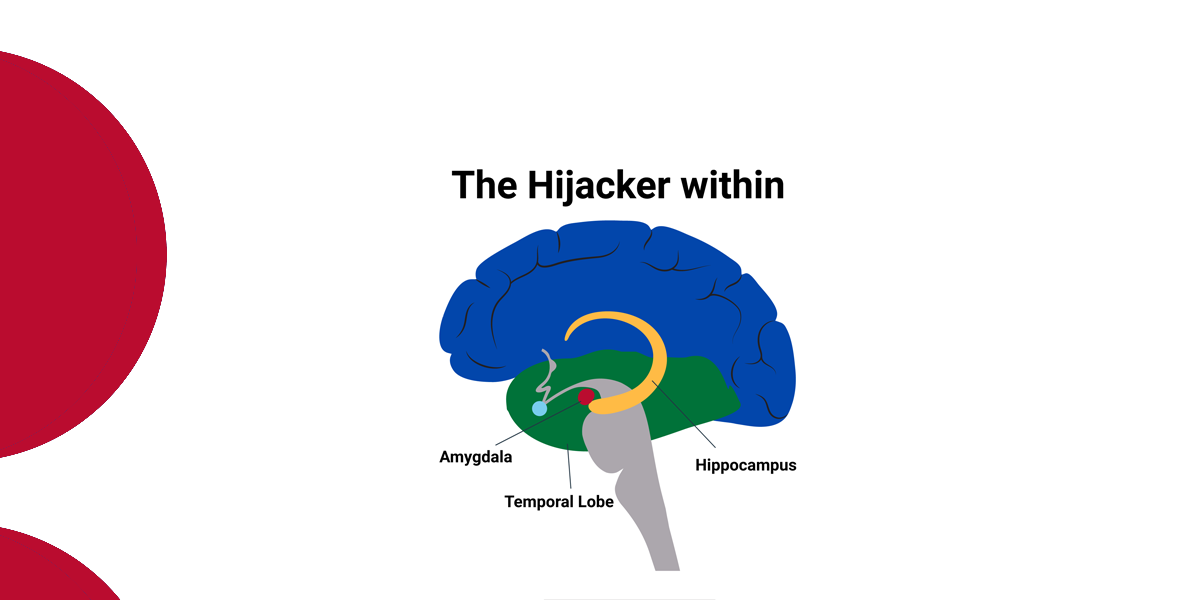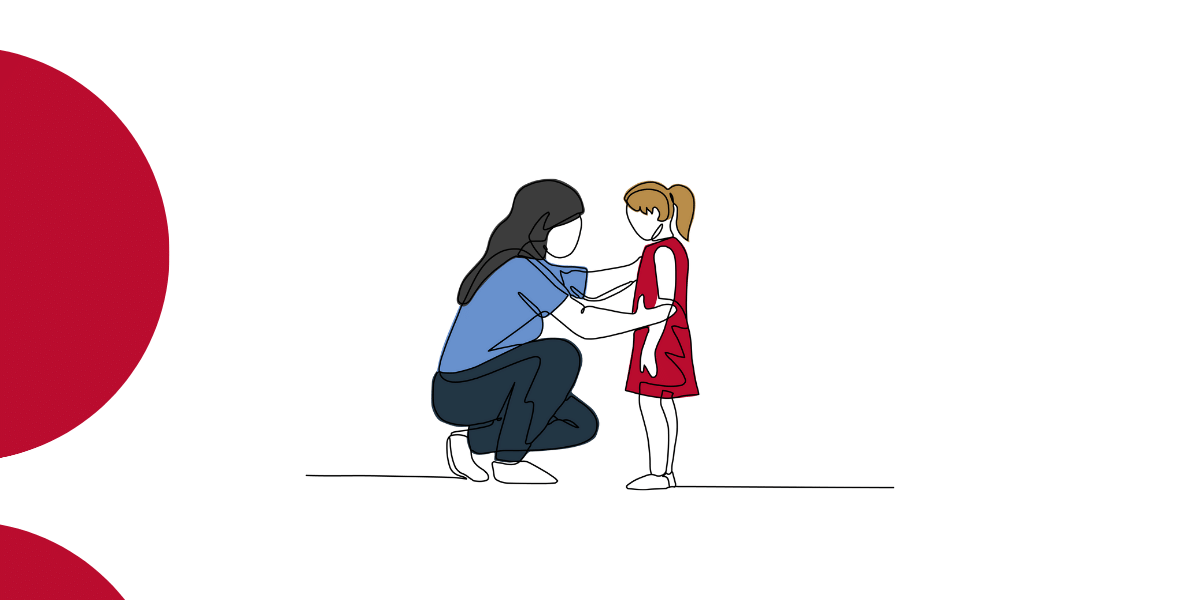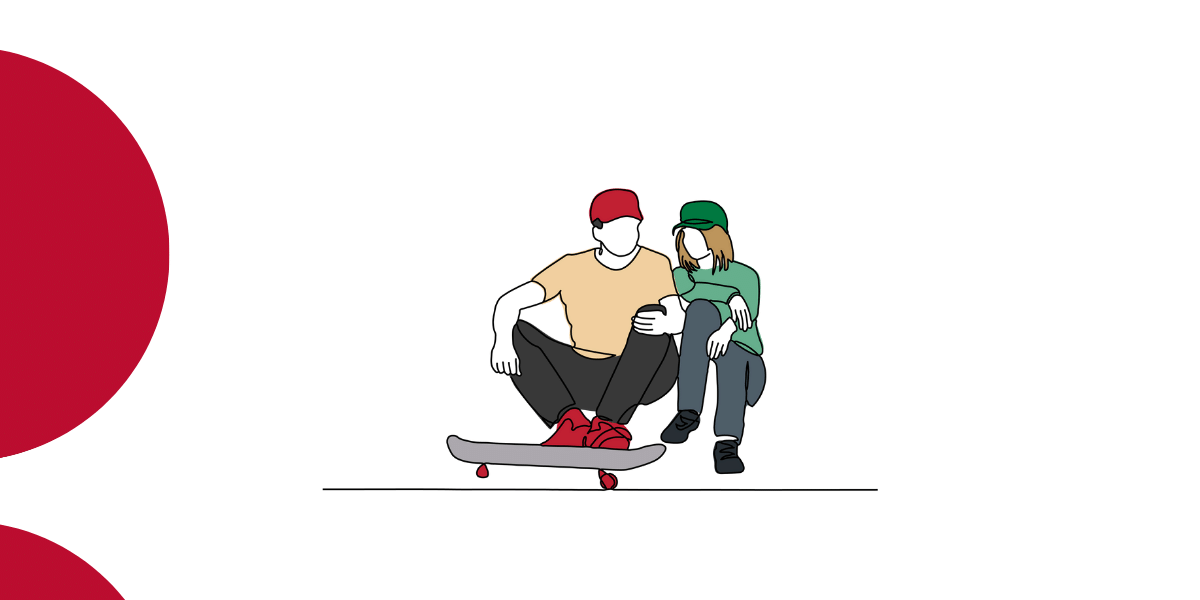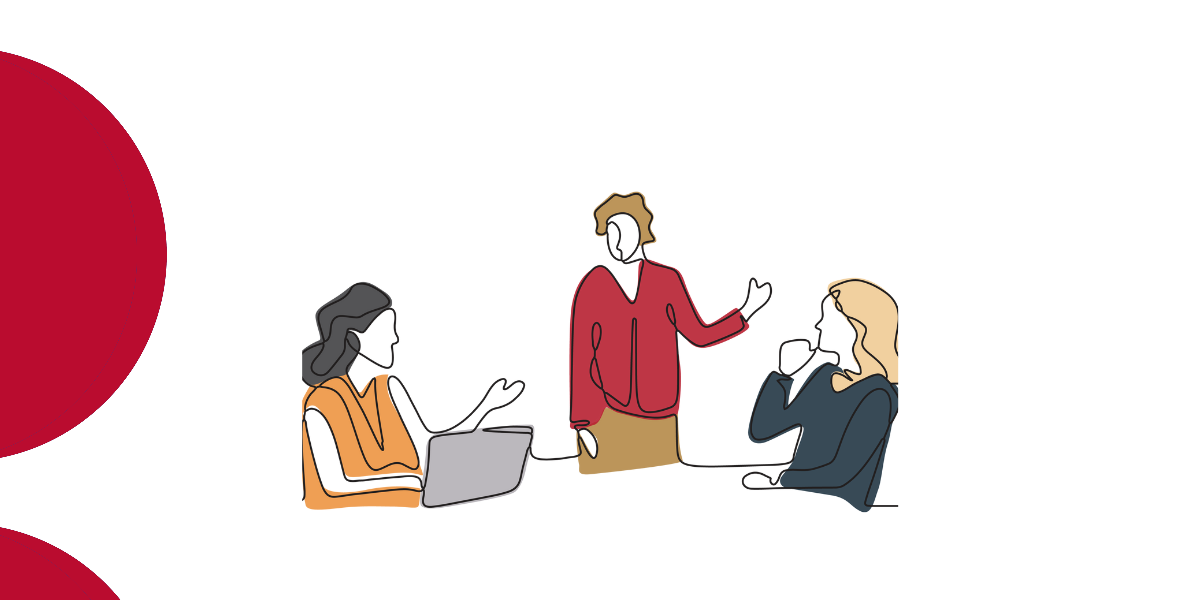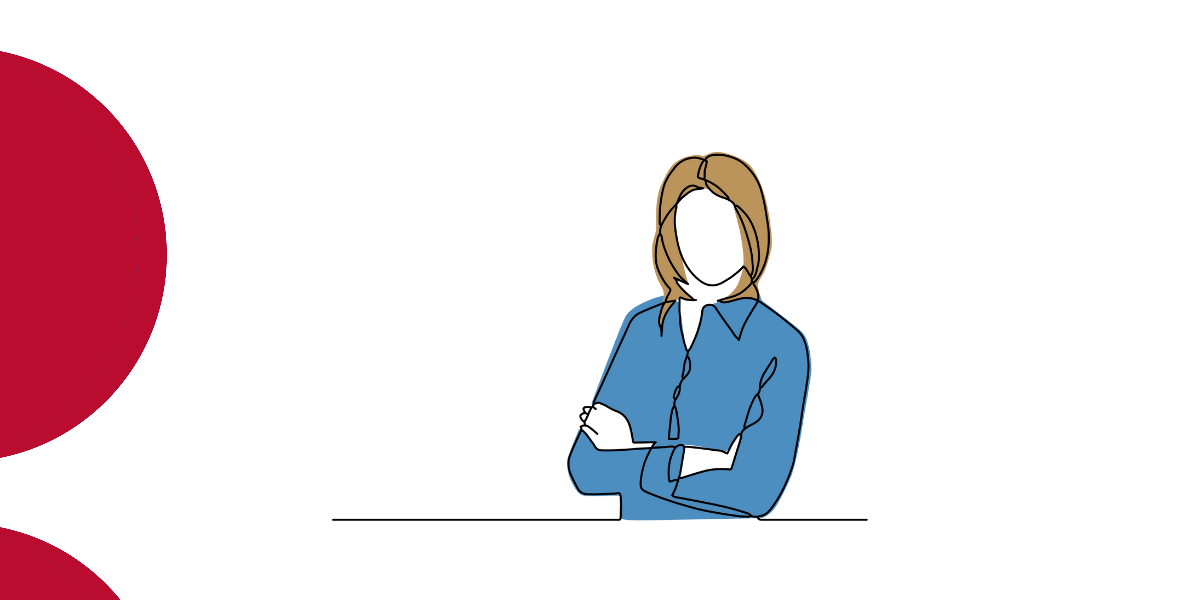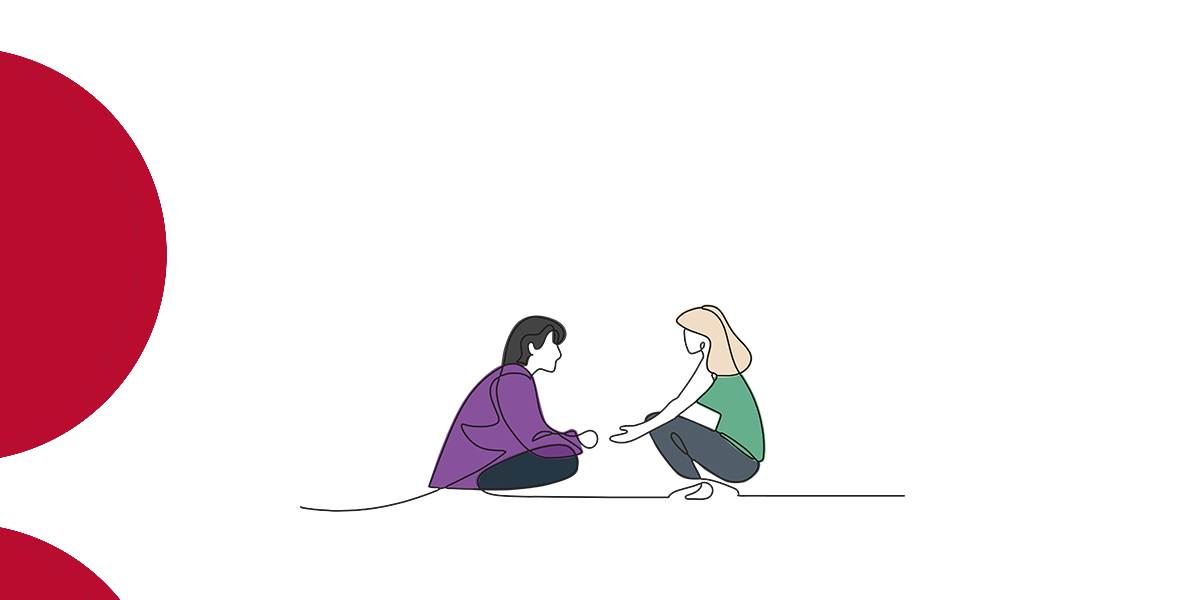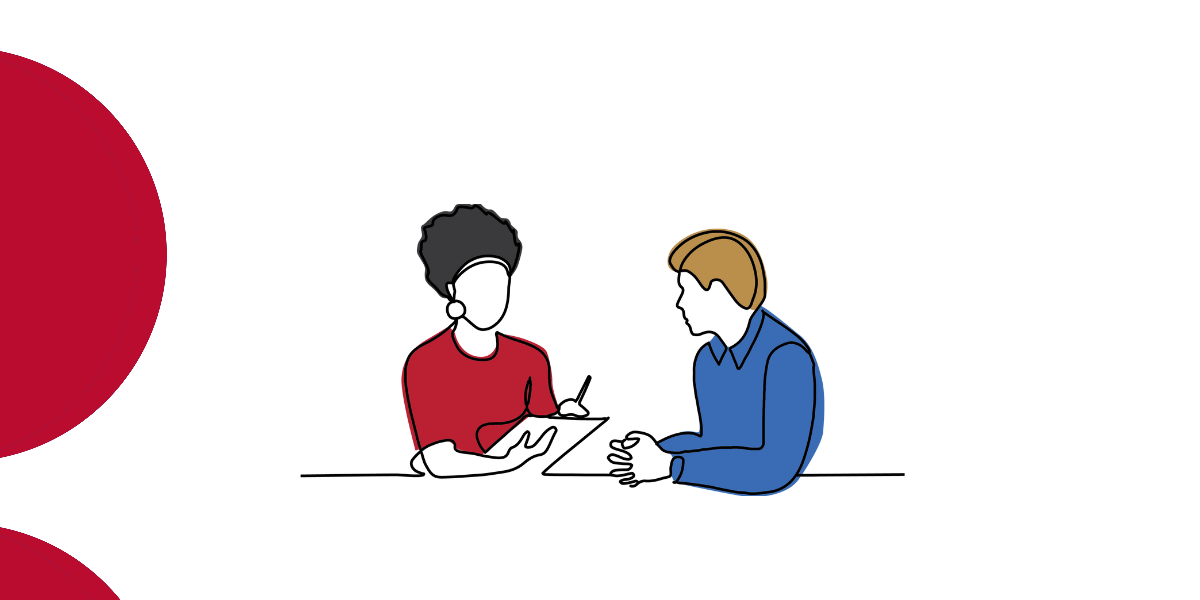Meet the CareSouth team
Dec 2023
Written by Kelly Royds
CareSouth was recently awarded the Outstanding Therapeutic Residential Care Team Award at Youth Action NSW’s Youth Work Awards.
The CETC proposed the new Outstanding Therapeutic Residential Care Team award category to Youth Action to celebrate and acknowledge the compassionate, dedicated teams supporting children and young people in residential care in NSW.
CareSouth received the award for the establishment of a specific therapeutic care team focused on bringing a sibling group back together into one house, while working towards restoration with their mother. As a team, they came together around a clear therapeutic intent to maintain and support the positive relationships between the siblings and develop a strong sense of safety in the home.
I recently had the opportunity to catch up with some of the CareSouth team members behind the program – Michael (Residential Team Leader), Daniel (Therapeutic Program Manager), Mel (Residential Support Worker), and Jorden (Permanency Support Caseworker). The team spoke about the award, their work, and why they’re eager to replicate the model with other families.
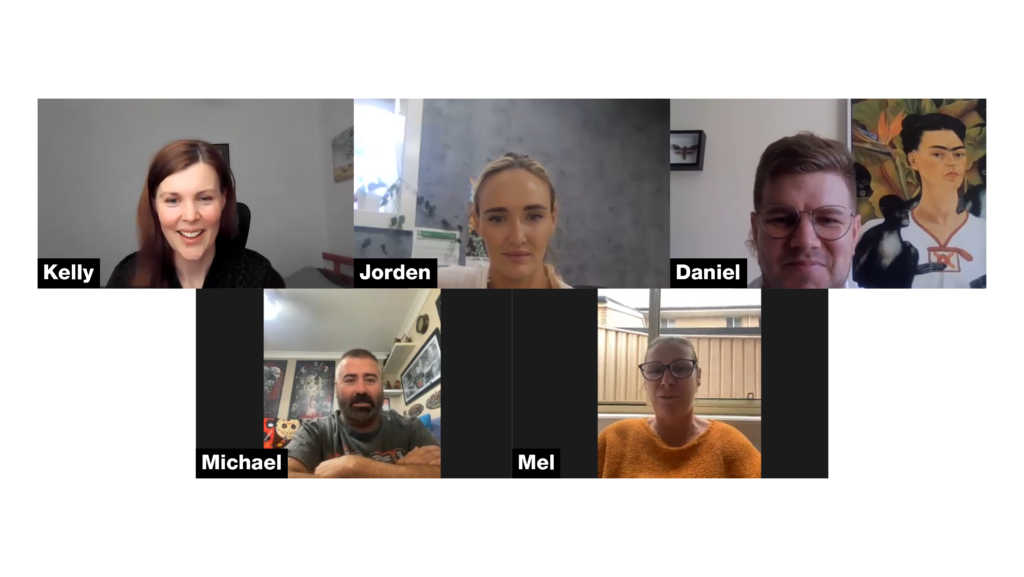
Michael: “Jorden and I gave a presentation on the program, what we were doing and how it all came about. One of the ladies from CareSouth who was there heard our story and nominated us for the award. It was nice the way it happened – somebody else recognised the work we were doing.”
Daniel: “I think the thought was that we could try to keep going as we were with all these kids in these different placements. But we wanted to try a different opportunity to see how it would work – Jorden and managers Iman and Tamara said maybe we need to put them in a house. Do you reckon we could throw together a team? Then, it had to be backed by the Department of Communities and Justice (DCJ). The idea needed to go back to them so we could ask if they were happy to support us in doing this, and then they had to work out a way to fund the program. It was funded as a short-term Interim Care Model (ICM), and then the focus was getting the kids in first and establishing that relationship with Mum. We had to do a lot of supervised contact at first to get support from the court, and then once we had enough, DCJ was able to support us as well and agreed that the best outcome for the kids would be to live together with Mum.”
Jorden: “We got knocked back a couple of times to start with. We got the kids in April of last year, and then it was maybe July when the idea came. Then, we didn’t get approval until around December. So it was a lot of back and forth and to and fro for it to come to fruition, with us pitching it again and again.”
Jorden: “Location was probably the biggest challenge. This family ended up here because they were up in Queensland, and at the time, there was no housing available. Queensland Housing said Mum should relocate to New South Wales for an easier time getting housing, but there is a huge housing crisis here, too. Mum moved down here with no family, friends or connections, and the fact that she couldn’t find appropriate housing was one of the reasons why the children were removed because they weren’t safe. The kids were originally at the same school, but they were all separated when they came into care. Once they’re with foster families, they take part in sports and do things outside of school, so being able to connect them and keep them connected to where they were was challenging. Having this program in its location and utilising transport to keep them connected to their local activities and sports teams has been essential. And I think we’ve managed to get it right where this family ended up with their housing because it’s still in a good location to access all of these. The ICM came about because we couldn’t find a space big enough and appropriate for Mum to be able to have the kids come back into her home because this was what we started with. We had to think sort of outside the box. What if we put all the kids into a house where they can live and have their own safe environment together, rebuild their relationship, and then bring Mum back in? So location has been key to everything, and I think they were really lucky. We hear this theme of housing issues more and more now.”
Jorden: “It’s really challenging to find one family that will take on more than two or three siblings at once, especially with varying ages. Unfortunately, all the siblings were placed in separate families apart from a set of twins. The biggest thing I noticed with this family immediately was how close the children were and how they looked after one another. To separate them left them vulnerable, and they missed each other terribly. For them to only see each other for two hours a week was heartbreaking. We were looking at restoration back to Mum, and it was part of her undertakings that she needed to show her parenting capacity to look after all of the kids. But how do you do that in a space of two hours? It reached a point of trying to find a way for this family to reconnect and for the sibling connection to remain the priority. Once we knew that restoration was a probability, we had the idea of the ICM. This mother could take all of the steps she needed to have her children back in her care. That’s when we all got together and said okay, what would this look like if it was a possibility? That’s where we started, and eventually, with support, Mum could slowly step in without being overwhelmed. We had the care of the support staff as well, who could build trust with the siblings and rebuild that sibling relationship that was so important and needed to be demonstrated to the kids. It was a positive, loving, caring environment that we could eventually step Mum back into and work with her to build her strengths with the children.”
Daniel: “One of the other advantages we had at CareSouth is a few of our other programs are sibling models, so it wasn’t our first. The difference for this program was that while a lot of our other kids are high-needs, that wasn’t the case with these siblings. This sibling group functioned well at school, was engaged in sports and friendships, and the oldest had part-time jobs. They had received some good parenting along the way. We could see the siblings loved each other, and Mum wanted to be involved in everything, too – appointments, school, sport. Even when she wasn’t residing with the kids, there was a lot of contact. We could definitely see her commitment to that, and we got to a point now where she’s with them, and we’re operating alongside her, like how can we assist you to make your day today better?”
Michael: “Being a restoration program, we were looking at returning the kids to Mum, so we had to look at staff members who could be role models for parenting for Mum and be positive about it. We had to look at people who would be able to show Mum how to set boundaries and stick to them, but also people who would be loving, caring and nurturing so that Mum could also get that side of it. We had some younger children in the house, and a couple of our staff had come from early child care, so they worked with the younger kids in a completely different way from what my other staff would. We had a couple of men join the team – it was important to show Mum and the kids positive male role models. This house wasn’t a case of ‘let’s just get these individuals together and put them in a program, and let’s make this work’; it was like if we’re going to do this pilot program, we really want this to work. Let’s get the right people involved, and yeah, I think we nailed it.”
Mel: “The team Michael and other managers put together, I think we all had something different to bring to the table. If the kids weren’t getting something from one of us, they could get it from someone else on the team, and we worked so well together that I think that’s why this house worked well.”
Jorden: “We had the kids connected to social workers and counsellors, and a lot of liaising was done with them because they were working with Mum and the children. It was a lot of thinking about how to best support these children in a therapeutic way and build Mum’s skillset to understand the trauma that the children have experienced and how we can build the relationship and rebuild that connection with the kids. The schools were consulted regarding supporting the kids with each transition phase that we went through because their schooling is a big part of their lives, but it was more the psychologists, the GPs, the pediatricians and the broader health care system that guided our approach, along with our internal clinical and management teams.”
Michael: “As a team Leader, it’s about getting the right mix of people. Some staff are going to work better in other services, so when we were doing this team for the program, we had to be specific with who we picked and why we picked them. I don’t think I could have picked a better team – everyone in that team brought something really special and really unique to the program, and that’s why it’s been such a success. I think getting the right people in the right positions is probably the most critical thing you can do in an out-of-home care team.”
Daniel: “I do think it’s the relationships. I think it’s the relationships the kids and Mum needed with Jorden and that they needed with the broader program team. I always see relationships as the most crucial because I look at my other houses – some of them are high needs – and the way you get a kid to settle and feel safe and secure is by having a relationship with them.”
Jorden: “We speak a lot about children with trauma and building relationships with safe adults. I think that is so important. Once we started to see those connections being made, especially with certain team members – certain children in this placement would connect with certain team members more than others – it meant that for key days, for example, if any of the kids were going to their counselling sessions, you would have specific workers on because you knew that the connection with that worker and that young person was so strong and had developed so well that you needed those strengths. Michael did an amazing job of ensuring that key workers were on key days for the kids, and it just worked. A lot goes into it, and a lot of behind-the-scenes stuff plays a part in supporting the day-to-day of building these kid’s skill sets and strengths to go out into the world after we step away. The program needed to function like a real household because we were going to put Mum back into there, and we needed to be able to step away. So everybody needed to be able to come in and have the routine, follow the structure and deliver it in the same way consistently every day because that’s what needed to happen for it to be successful in the long run.”
Mel: “The thing with this program is, we all cared. And it was quite obvious that we were all here for the same goal. Every single one of us engaged with Mum. We were always there for them to do everything they needed from us.”
Jorden: “Where do you start? Somebody who’s loving and caring and wants to build that relationship and build these kids up. That’s it, you know, they treat them like they would treat their own families and kids. It’s about creating this safe, loving environment that’s building these kids into beautiful people.”
Daniel: “I think a willingness to work as a team and be consistent. You can always go in the house and be the kid’s favourite by giving them this and that. But we know with these kids, they didn’t need that. They needed everyone to be on the same page with everything. And I think that’s what we needed for this team. We needed some different people of different ages with different experiences. We had some old team members and some young, some that had been doing support work for 20-plus years, some that were parents, some that weren’t. I think us being able to build a team of very different personalities and people, but getting them working consistently together is what was most effective.”
Daniel: “In this case, we knew the kids before we set up the team, so we knew exactly who we were putting together. When we were looking at the staff, we wanted to get the right personalities and people for these kids. By chance, some of the kids had already been doing some mentoring, so we thought, right, some of our staff already have great relationships with these kids. Let’s bring them into some support worker roles as well. We also spoke to the team leader, who probably had the most experience within my team, about wanting to do something slightly different. His background has mostly been working with high-needs disability clients, but when we floated the idea of what the program would be, he said he’d love to be involved and had people in mind that he’d bring along to be able to match needs in the house, too. I think we had that advantage where we knew the team was going to work because of the way we created it.”
Jorden: “We were matching with Mum too because we were consulting with her on how she wanted this all to go. The routines we set up had to be manageable and sustainable for her, so communication was key, along with putting the right people in so that she felt comfortable enough to talk to them. We had some key workers who were parents of children the same age, and we knew they would connect with her on the same sort of level that could guide her in parenting. It was about putting people in that role that we knew would be able to connect with and support her and encourage her to create her own home. Communication has been key throughout the entire process. It’s been about communication and connection – our team does incredibly well on all levels, from support workers to team leaders, program managers to caseworkers and families.”
Michael: “You know, when you start, you always have little teething issues. It wasn’t plain sailing from day one, but the fact that we had the right team meant that any of the problems we came across during our time the team solved. They were the ones that actually worked through a lot of the issues, and that made them stronger as a team and even as a family unit with Mum and the kids.”
Mel: “It took a while for Mum to get used to us being there and to be able to communicate with us freely so that we could work together, but once we all got used to it, it worked really well.”
Michael: “In our industry, building trust with parents is a key part of our work, but this was different. Mum started visiting a couple of times a week, and by around August, Mum was living in the house. We had to engage and interact with Mum differently than we would with parents of other children in the out-of-home care system because we had so much contact with her. As an out-of-home care team, it’s probably the first time we weren’t just supporting the kids but Mum as well. It was very unique, but it became natural by the end. This house model could potentially change the way we work in this sector. Rather than taking the kids, and that’s it, our current situation is one where it’s been recognised that Mum isn’t a perpetrator; she’s also a victim. There were a lot of circumstances around what happened that were outside of her control. I saw the system finally wake up and say she deserves a second shot, and you know what? She’s doing everything right, so let’s help her. How could you not want to be part of that? If you can get the kids back with their parents in a stable home, there is no better outcome. As good a job as the staff and the teams do in our residential out-of-home care services, kids will never be happier than when they’re with their mum and dad. There are some families where it just can’t happen, but generally, if kids can go back to their mum and dad and it can be in a stable, safe environment, that will always be the best outcome.”
Mel: “It became a process of us stepping back as Mum was stepping in more, and us supporting her so that she could take over that parenting role. It’s been great seeing the relationship develop between the kids and Mum and how it’s grown since we first started working with them. She’s done everything above and beyond what she needs to do. Her only goal is to have those kids with her, happy and thriving. She’s worked so hard.”
Daniel: “Full credit to Mum. The kids were obviously removed from her for a reason, but she turned herself around, and she found her own support. If she had not been able to do that, we wouldn’t be having this conversation today –the kids would still be in care. She was able to do a lot of the hard work as well and was also open to working with us, which I imagine would have been incredibly hard for her. At first, she was quite anxious. She didn’t know if she could trust us or what that relationship would be. But I’d say now it’s a very close relationship.”
Jorden: “While a lot of my daily work would be with the kids making sure their needs are met, the most important relationship in this entire program has been a relationship and the work we’ve done with this parent. I think I’ve done more hours, more work, and more relationship-building with Mum because if she can’t step back into that role and it’s not going to be successful, then it won’t be worth it for the kids. It’s almost like having another client in itself because you have to be able to work with her and build her skill set to support the children.”
Michael: “Like anyone that works in this industry, we don’t do it for pats on the back, but it’s also a thankless job, so to actually be recognised for what we’ve done and all the hard we’ve put in and then to win the award it feels really nice. It felt great to get up there and accept that award, look at it, and go, you know what, I am in the right industry. It was that moment of, well, yeah, I am doing the right thing and doing a good job; otherwise, I wouldn’t be standing here right now. I’m hoping that this becomes the first of many. We worked so hard to get that recognition so that people would look at us and go, hey, this is what we need to do from now on. It’s not going to work in every family, and not everyone will meet the criteria and be able to do this, but there’s a lot out there that could happen. Time will tell. If this becomes something that we do again and again and again, then yeah, it’s worked, and we got the recognition for what we did – I reckon I’ve got another 50 restorations in me. If it never happens again, then, mate, I’ll still take the win because we’ve got these kids back with their mum. By winning this award, hopefully, other organisations will see it and go, hey, well, maybe this is what we can do, you know.”
Mel: “I’m hoping that other people will see us win this award, and all that we’ve done will encourage them to have a deeper look into it. I hope we can set up some more of these programs. If we can get more kids back with their parents and help the parents to care for the kids, it’s definitely a better outcome for the kids.”
Daniel: “So I think the award shows that other people agree as well that what we’ve been able to achieve here and what Mum’s been able to achieve is amazing. I think a lot of our support workers just love doing the work. I know recognition isn’t something that they always get, but I think they generally love their roles and the roles they play in the houses. Some of our support workers in the house with Mum have been doing this work for decades. So we try to show them that we appreciate them in how we run our team meetings, our training and our reflective practice. I hope that shows that we do care about the work that they do. It’s also important when they see the positive results as well, because with some of the kids that we work with in residential care, we mightn’t see the results, but then the next minute, they’re 21 or 22, contacting us and saying, hey, guess what? I finally got a job, or I got into TAFE or uni. And it’s important that I share those stories with some of my team because they might say, what do you mean that’s what they’re doing? When they were 16, they were doing this, that and the other, and we could never find them. But we still make an impact, and they remember some of that stuff. A lot of the positive outcomes for what our support workers do is that later stuff later on in life, but the big difference with this house is that while we usually see these results years later, we’re seeing the results now. In one more month, the kids are actually going to be living in their own place with Mum. We’ve been able to see those results in a twelve-month period.”
Jorden: “I think the validation and the recognition is that we’ve got this family back together again. That’s the sole purpose; that’s the drive. We did have challenges along the way, absolutely, but everyone was so positive. There was never a time where we were like, oh, this isn’t going to happen, you know? It was like, okay, there’s a hiccup; we’re going to work through it and keep moving forward because there’s no other option. I hope that being recognised for this has given people a look into how successful this approach can be and how much potential there is in a program like this to be able to get children reconnected to their families, with opportunities, and have a massive team come together and really just focus on it. That would be the ultimate thing, to have another program run. Once we see this family move on and go back to living their lives, we could then help another family in the same way. That’s the drive for me. If this is a platform for us to be able to say, hey, look, this works, and you know, with the right people in the right place and the right supports, we can do it for hundreds of families because there are so many families that need it.”


